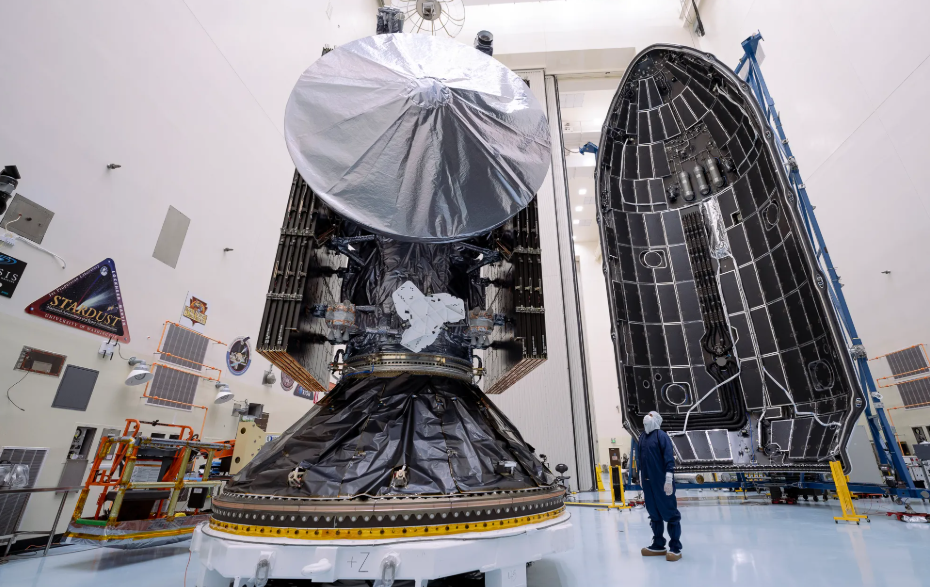Jesus wept three times in the Bible. One was at the death of Lazarus. Jesus showed his displeasure with death as a heritage that came from the failure of Adam and Eve on their mission on Earth. Jesus also wept at the inability of us, His creation, to believe Him and avoid dying in sin. Poor Jesus. He must have overestimated what we could do. The third time Jesus wept was when He pictured the destruction that would befall Jerusalem on judgment day for again failing to live up to Jesus’ expectations.
Since then, Jesus has not wept again despite humanity’s continuing misbehaviour since He left. Jesus has not wept since because of His hope in scientists’ work in opening up the heavens one layer after another.
On October 14, 2024, while you were sleeping, NASA launched the Europa Clipper mission from the Kennedy Space Center in Florida. It is going to land on one of Jupiter’s moons called Europa. This moon has an ocean on it. The spacecraft will travel 1.8 billion miles for six years and arrive in 2030. The implications will be momentous if the spacecraft finds life on Jupiter’s moon, Europa. You might as well say, “It’s finished.”
For those who may not know it, Jupiter is one of the planets in our solar system. Galileo Galilei spotted Europa as a dot in 1609 with his ancient telescope. Together with seven others around our sun, they orbit the Milky Way galaxy’s center once every 210 million years. And they travel at the speed of 240km/second. We don’t feel it move because it travels at the same constant velocity. It is the same thing with the aircraft. Even though an aircraft travels about 460 to 575 miles per hour, those inside mostly do not feel it is moving.
Advertisement
This $5.2 billion mission to Jupiter to check out its ice-encrusted moon is at the heart of a renewed search for life outside the Earth. The ocean on Europa holds more water than all the oceans on Earth combined. Scientists hope to find biological ingredients inside the ocean that have existed for billions of years.
When scientists work hard to go to our moon or Mars, we think of visiting a place inhabited by some life forms billions of years ago. However, visiting Europa might take us to a spot currently occupied by life.
Meanwhile, scientists have uncovered lava tubes under the surface of our moon. It is now being studied as a place to build infrastructure where astronauts can live.
Advertisement
On Mars, scientists have used seismic data collected from many Mars probes to determine that underground water exists inside rocks found 7–13 miles below Mars’ surface. While it may be challenging to drill that far on Mars, it gives hope that one day, we may travel to Mars and make a home on the red planet.
As you read this, a 2020 rover called Perseverance that landed on the surface of Mars has collected over two dozen rock samples in an airtight titanium tube. According to NPR, NASA is working with the European Space Agency to retrieve the rock samples and bring them to Earth for more studies. An earlier plan would cost over $11 billion and not happen until the 2040s. NASA is considering two new and cheaper plans to return the samples before 2039.
Scientists are salivating about possible geological and biological treasures these rocks from Mars will have. They can explain the history of Mars that we do not know and evolving life on the planet. Unlike Martian meteorites, which sometimes land on Earth, these rocks will be pristine, unaltered by their long space journey and atmospheric entry.
Besides the technical challenge of retrieving the rocks and bringing them to Earth, there are concerns the rocks could bring in particles that may contaminate the Earth.
Advertisement
If NASA and their European allies delay, China is pursuing its mission to retrieve rocks from Mars.
The race is on. But that is not the only race going on.
In 2005, Mike E. Brown “killed” Pluto. I hope you heard the news.
Based on the studies by Brown, an astronomer and a professor of planetary astronomy at the California Institute of Technology, the International Astronomical Union in 2006 demoted Pluto from planet status to dwarf planet. Pluto failed to meet one of three criteria that make an object a planet. While it is orbiting the sun and is spherical, it is not large enough to ensure that other objects of a similar size are not in its orbit.
Advertisement
Since then, scientists have been searching for a replacement for Pluto. They suspect one orbiting at the edge of our solar system. They believe this because something is distorting the paths of smaller objects somewhere there. It is something that planets do. They have determined that whatever is doing it is about five to ten times the mass of the Earth, but smaller than Neptune. A new telescope to be launched soon is promising to find this planet. It is called the Vera C. Rubin Observatory in Chile. The telescope’s strength is unmatched, capable of discovering countless new objects, potentially including the elusive 9th planet.
Mike Brown, the man who “killed” Pluto, is hoping to be the person who finds it.
Advertisement
In biological studies, scientists recently discovered a 520-million-year-old worm lava with its brain and guts intact. Evolutionary biologists are celebrating because of all the possibilities they can deduce from this rare ancient find. They are already drawing evolutionary connections between the ancient insect and the ones we have scurrying around today. This advanced study will enhance our knowledge of evolution.
These are hopes, not hypes. These are not pipe dreams.
Advertisement
Talking of dreams, scientists are working hard to engineer dreams. They hope to use it to treat nightmares and PTSD. It is as fascinating as what they wish to do with the vagus nerve, the brain’s most interconnected nerve. Some scientists believe that stimulating the vagus nerve (also known as the tenth cranial nerve) in specific ways can cure various illnesses.
Even physical scientists will tell you that the universe as we know it today is not how it will be one thousand years from now. As of today, we know four fundamental forces govern the universe. Physicists called them the strong nuclear force, the weak nuclear force, electromagnetism, and gravity. They believe that in the early days of the universe, electromagnetism and the weak nuclear force existed as one force called the electro-weak interaction. This force existed only in the first trillionths of a second of the universe. Later, the Higgs mechanism separated the two forces.
Advertisement
We can currently observe and measure this force at the CERN’s Large Hadron Collider (CHC) in Switzerland. As China builds its Circular Electron-Positron Collider and Japan builds its International Linear Collider, with Switzerland’s new Future Circular Collider and the Compact Linear Collider, we hope scientists will arrive at the long sought-after Grand Unified Field Theory. And if you add gravity, we will get the complete “Theory of Everything.”
Make sure you don’t die soon. The best in the world is yet to come. When we get to the “Theory of Everything,” the news media will scream on the front pages, And Jesus wept, for the fourth time.
When Jesus weeps for the fourth time, it will be for joy because humanity has overcome sin and gravity and soared to the heavens.
Rudolf Ogoo Okonkwo teaches Post-Colonial African History, Afrodiasporic Literature, and African Folktales at the School of Visual Arts in New York City. He is also the host of Dr. Damages Show. His books include “This American Life Sef” and “Children of a Retired God.” among others. His upcoming book is called “Why I’m Disappointed in Jesus.”
Views expressed by contributors are strictly personal and not of TheCable.
Add a comment












